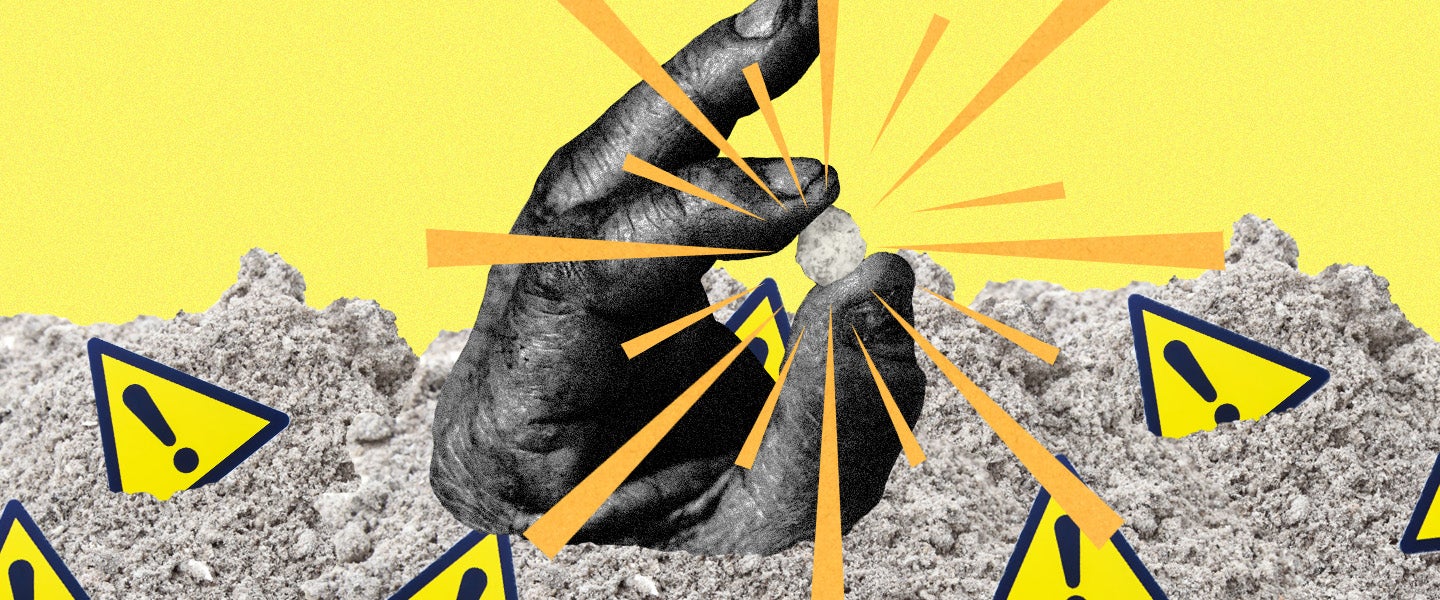Although I’ve made clear my intentions about what’s to be done with the bag of meat I call my body when I die, I couldn’t help but take interest in a recent Reddit post in which a wife bemoaned her husband’s dying wish: to have his skull cleaned and placed upon the family mantel, and his ashes turned into gemstones, which, naturally, would be placed into the eye sockets of his now gleaming skull.
Totally metal.
And also, totally illegal — at least the skull part.
The corpse-turned-gemstones market, however, is thriving. In fact, last October, a company called Eterneva appeared on Shark Tank, winning a $600,000 investment from Mark Cuban. (They even already have a competitor named LifeGem.) The science, too, makes some sense in theory: When bodies are cremated, they leave a pile of ash. Supposedly, within that ash is carbon, which can be collected and turned into diamonds.
The thing is, according to funeral directors and gemologists, their offering is mostly bullshit. (Unfortunately, there isn’t a governing body that regulates the type of information post-cremation companies can claim — like, you know, that they can turn you or your loved one into a diamond once you leave this mortal plane.)
“The idea that people are getting any DNA at all in cremated remains is totally bogus,” explains Gail Rubin, a certified thanatologist and self-proclaimed “Doyenne of Death.” “When a body is cremated, the fire is usually between 1,200 to 1,800 degrees Fahrenheit. That destroys any DNA and RNA in the body.”
Which more or less negates the claim from corpse-to-diamond companies that the gems they make contain “trace elements and carbon isotopes validating the authenticity of the diamond [and ensure] that these elements match up with the ashes of an individual.”
Robert James, a gemologist at the Insurance Institute of Jewelry Appraisal, has been leading the charge against companies promising to turn cremated remains into jewels. In a report pitting claims made by Eterneva against independent scientific research, James concludes that while living human bones do contain carbon due to the living tissue, “during the cremation process, all of this carbon is either lost to the furnace fire or turned into gas that escapes through the cremation furnace vents.”
“Simply stated,” he continues, “there is no carbon left in cremation ashes unless the body is only partially cremated, something no cremation company will do.”
And even if these companies could extract some trace elements of a not-living human being that they can mix in with graphite and other forms of carbon to grow a diamond — at what point is that just a synthetic diamond, and not a diamond composed primarily of a loved one?
This is the question raised by gemologist Grant Mobley, who in an interview with Page Six argues that Eterneva et al are essentially making regular synthetic diamonds with a huge price tag, thanks to the added emotional component (depending on size and color, cremation diamonds can range from $1,250 to more than $20,000). “While these companies may be manufacturing synthetic diamonds that look similar to natural diamonds,” he told the gossip column, “the consumer is left with a synthetic diamond that has no value and no ties to the ashes of a loved one.”
Rubin, however, rightfully points out that both James and Mobley aren’t exactly dispassionate observers. That is, she tells me, “They have a vested interest in avoiding this whole field because they want to sell real diamonds,” adding that there’s plenty of carbon found in human hair, which these companies have tweaked their language to include. “You notice that they start talking about hair as a way of extracting the carbon, but in order to be able to do that, you’d have to cut the deceased person’s hair before they’re cremated,” she explains. “And I think that element makes people a little uneasy because it doesn’t really speak to you as who the person was, per se.”
If anything, though, Rubin says consumers should be skeptical because of the immense price tag. “People can get jewelry that puts just a tiny bit of cremated remains into a keepsake locket or swirled into art glass. These options are much cheaper [typically, $300 max], and you know for a fact the ashes of your loved one is in there,” she says.
In other words, while their reflection might not sparkle, you can at least be sure that it’s them you’re looking at.

